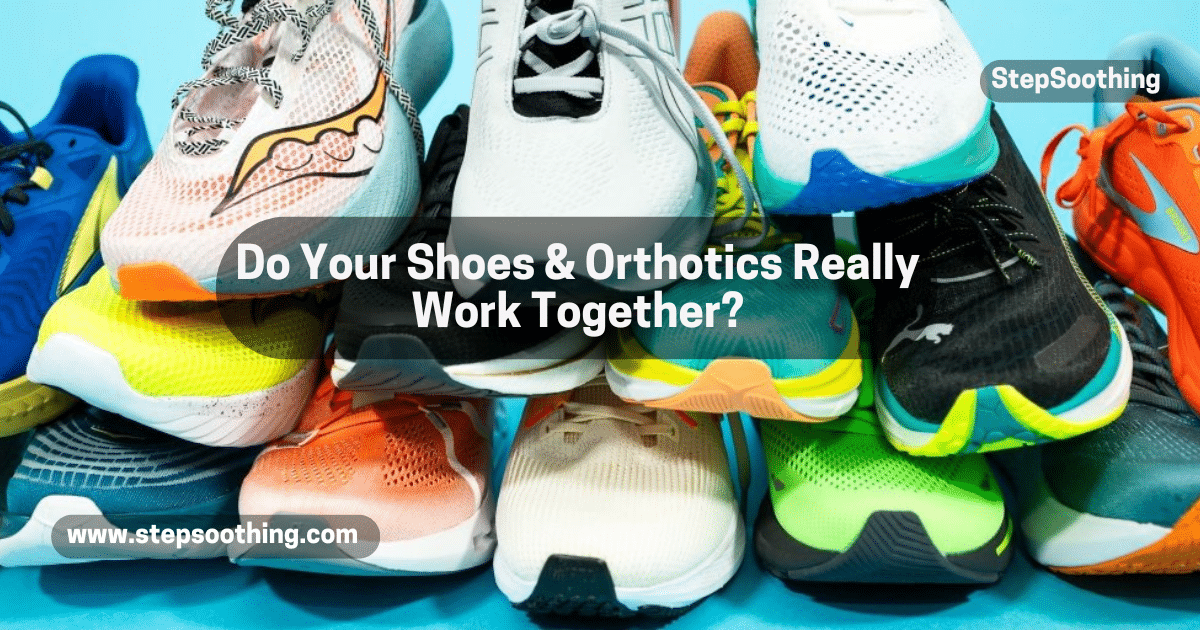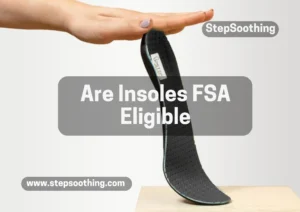Orthotics are medical devices designed to support the foot, improve alignment, and relieve pain caused by injury or structural imbalances. They play a critical role in treatment, but their effectiveness largely depends on the footwear they are paired with. A pedorthist can help determine the most compatible shoes for your needs, ensuring a successful outcome.
Selecting the right shoes is central to achieving the best results with custom or manufactured orthotics. However, many find that their existing shoes may be incompatible, leading to unsatisfied experiences. Evaluating the features of different shoes and making necessary adjustments can help achieve better foot support and comfort.
The Ultimate Guide to Shoes That Fit Orthotics Best

Shoe Types and Their Compatibility with Orthotics
Athletic Shoes (Running, Walking, Cross-Trainers)
Athletic shoes are often the most compatible because they typically have a removable footbed, wide toe box, and a firm yet cushioned midsole. This design allows orthotics to be placed inside smoothly without bunching or slipping.
When shopping, look for brands that offer low-volume shoes with sufficient depth to accommodate custom inserts. If the original insole is not removable, trimming may be required to create enough space for the new insert.
Dress Shoes (Formal, Office Wear, Heeled Shoes)
Many dress shoes present a challenge due to their low-volume, rigid soles, and narrow fit. For those suffering from foot conditions, finding a pair that can secure an orthotic without drastically altering the fit can be difficult.
A reasonable approach is to use custom-made low-profile orthotics that fit seamlessly into dress shoes. In some cases, replacing the sock liner can create more space, while in others, investing in multiple shoes that are designed for orthotics may be the most beneficial solution.
Casual Shoes (Sneakers, Loafers, Slip-ons)
Casual shoes like sneakers and loafers are often compatible with orthotics, but it’s critical to check the interior before purchasing. A pair with a removable footbed and adequate volume will help prevent wrinkling, bunching, or rocking of the orthotics.
If the shoe’s interior is too tight, adjustments can be done by trimming the sole or using a scissor to modify the shape of the orthotic slightly. This ensures that the device fits comfortably without causing slipping or tipping.
Work Boots and Safety Shoes
Work boots and safety shoes need firm support and shock absorption to protect against injury. Many boots have thick midsoles, which may require modifications to properly accommodate orthotics.
In some cases, using heel lifts or adjusting the laces can improve stability. It is recommended to visit a clinic or consult a podiatrist to ensure the footwear is fitted correctly for long hours of performing activities.
High Heels and Fashion Shoes
Standard orthotics are often incompatible with pumps and ballet flats due to their slim, low-profile design. However, alternatives like custom-fabricated inserts or gel pads can help provide support while maintaining style.
If changes are necessary, some brands offer fashion shoes with built-in arch support, making them a more successful option than trying to place a full-sized orthotic inside.
Sandals and Flip-Flops
Sandals and flip-flops rarely provide enough space to secure an orthotic, but some brands now offer models with built-in support. These can be an excellent replacement for standard sandals.
If an orthotic-friendly sandal is not available, consider interchangeably using a custom insert designed for an open shoe, ensuring that the foot remains stable and elevated properly.
Factors Affecting Orthotic Compatibility in Shoes
- Removable Insoles and Depth: Creating enough space is critical for a comfortable fit. Shoes with deeper interiors allow orthotics to rest smoothly, preventing discomfort and bunching.
- Width and Toe Box: A wide toe box prevents wrinkling, slipping, and bunching of the orthotics, ensuring they remain in the correct position.
- Sole Firmness and Flexibility: A firm midsole prevents rocking and sliding, ensuring that the orthotic functions properly.
- Heel Height: Higher heels alter foot posture, impacting orthotic support and stability.
- Material and Breathability: Breathable materials reduce sweating and discomfort, making orthotics more comfortable to wear.
- Closure Systems: Laces and Velcro help keep the foot secure, while slip-ons may lead to slipping.
Modifying Shoes to Improve Orthotic Fit
If an orthotic does not fit completely, consider:
- Stretching the shoes for extra space.
- Using heel lifts or pads to adjust alignment.
- Adjusting laces or straps to ensure a secure fit.
- Replacing shoes annually if wear impacts orthotic effectiveness.
Best Orthotic-Shoe Matches for Common Foot Conditions
- Plantar Fasciitis: Shoes with deep heel cups and firm arch support.
- Flat Feet: Motion control shoes with structured midsoles.
- Diabetes: Soft, cushioned shoes with pressure relief.
- Overpronation & Supination: Stability vs. neutral shoes based on gait analysis.
People Also Asked
Are my orthotics capable of switching between shoes?
Yes, but differences in shoe volume, interior shape, and footbed design may require adjustments. Some orthotics are designed for specific footwear, so it’s best to consult a pedorthist before using them interchangeably.
How Often Should I Visit My Pedorthist?
It is recommended to schedule an appointment yearly for a check-up. If you experience discomfort, a follow-up should be scheduled to ensure the device is still providing positive results.
Do I Have to Remove the Insoles When Using My Orthotics?
In most cases, removing the sock liner is required to create enough space for the orthotic to sit comfortably without sliding or bunching.
Do I Need to Buy Bigger Shoes to Use My Orthotics?
Not necessarily. Instead of purchasing a larger size, focus on checking the width, depth, and material of the shoe to ensure a secure fit.
How Do I Know if My Orthotics Fit Correctly in My Shoes?
If your orthotics slide, feel unsatisfied, or cause wrinkling, they may need to be re-evaluated or replaced to ensure the best results.
Final Words
Finding the right orthotic-compatible shoes is essential for foot health, comfort, and achieving the best results. Many people wonder, “Can you wear two pairs of insoles?“ While it might seem like a way to enhance cushioning, stacking insoles can actually cause instability, leading to discomfort or improper alignment. Instead, it’s best to use a single, well-fitted orthotic that properly supports your feet.
There are also many common misconceptions about orthotics, such as the belief that they are only for older adults or that they weaken foot muscles. In reality, properly fitted orthotics help with alignment and can be beneficial for people of all ages. Expert opinions on insole use suggest that choosing the right shoe-orthotic combination is crucial for preventing discomfort and maximizing benefits. Additionally, research on orthotics and knee pain relief has shown that the right support can reduce stress on the joints, improving overall posture and mobility.
If you’re unsure about your footwear and orthotics, consulting a pedorthist or podiatrist for a proper assessment can help ensure you’re making the best choices for your foot health.



